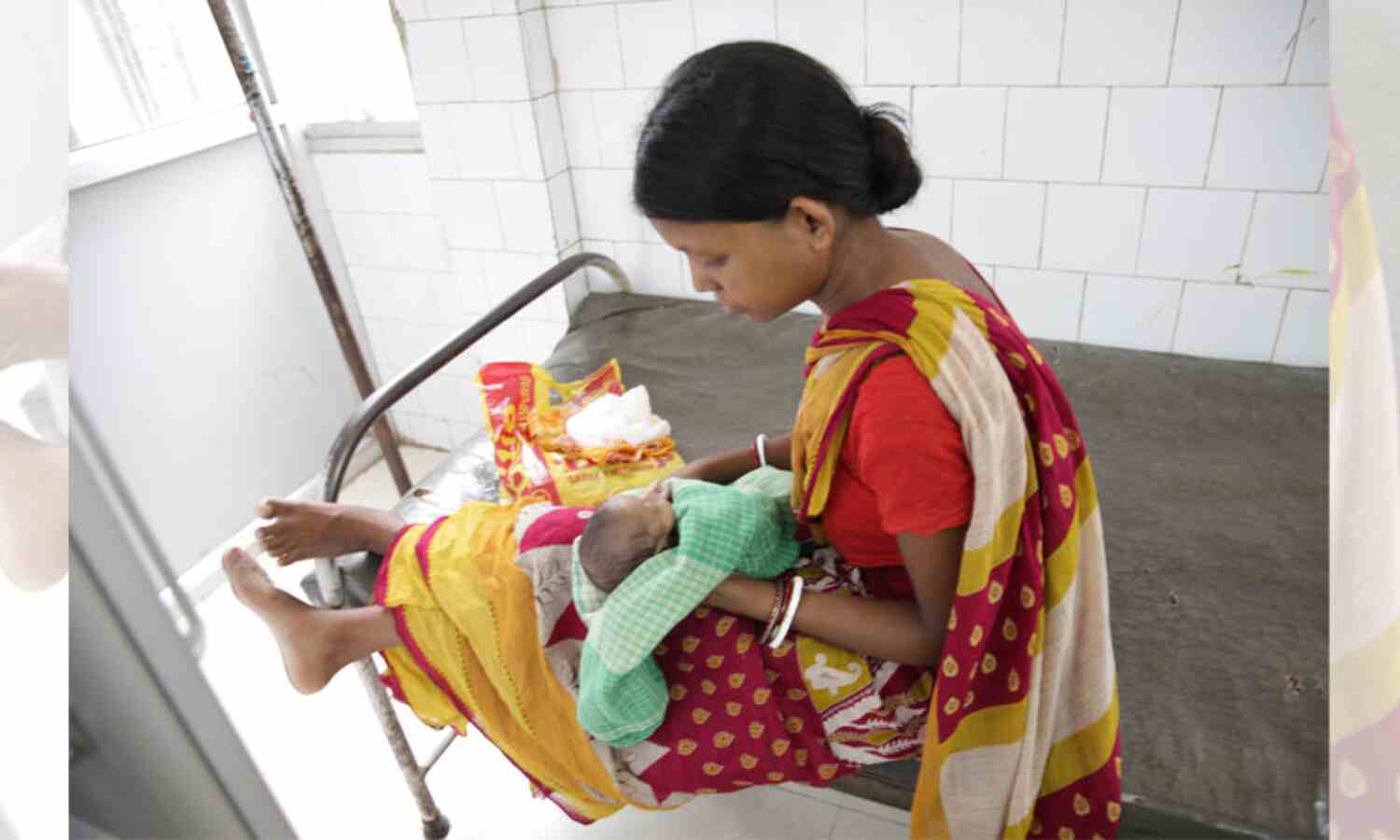Fewest Mothers Die In States With Best ‘Health Performance’

Mumbai: Fewer Indian mothers died in states that improved their overall “health performance”, according to an IndiaSpend analysis of the latest maternal mortality data.
Seven of 10 Indian states with the lowest maternal mortality ratio (MMR) ranked highest in a 2015 health index produced by the government think tank NITI Aayog, our analysis showed.
The health index, which ranked states by “health performance”, considers infant and under-five mortality, sex ratio at birth, immunisation, institutional deliveries, health-monitoring and governance indicators such as occupancy of hospital beds, infrastructure and human resources.
Kerala, Punjab and Tamil Nadu are the top three states in the health index, while Uttar Pradesh (UP), Jammu and Kashmir and Jharkhand improved quickest from the base year (2014-15), according to the NITI Aayog index. Mizoram and Manipur topped the list of eight smaller states.
The conclusion: States that invested in improving health infrastructure, quality and access of services, human resources and health outcomes, reduced the number of maternal deaths.
Only 3 Indian states have met global MMR goal
India’s maternal mortality ratio--maternal deaths per 100,000 live births--dropped from 167 to 130 over three years to 2014-16, according to a special bulletin on maternal mortality issued by the Sample Registration Survey issued by the Registrar General & Census Commissioner, India.
However, India’s current MMR is still higher than the sustainable development goal (SDG) target--a set of globally agreed goals that India has signed on to--of 70 deaths per 100,000 live births for the world by 2030.
The best improvement in MMR was registered by UP (nearly 30%), from 285 in 2011-13 to 201 in 2014-16, followed by Kerala (24%). Only three states have a MMR below the SDG target of 70: Kerala (46), Maharashtra (61) and Tamil Nadu (66).
Source: Sample Registration Survey (2014-16)
States with the lowest MMR are also the ones performing the best on the NITI Aayog’s health index.
The latest SRS figures reveal that we have gone beyond the MDG target of Maternal Mortality Ratio (MMR) of 139 by 2015 & have reached 130!! I congratulate the Ministry, @MoHFW_India and the states for their joint efforts. pic.twitter.com/H2t0ik0Egx
— Jagat Prakash Nadda (@JPNadda) June 6, 2018
While India’s MMR is better than some of its neighbours--such as Pakistan (178), Bangladesh (176) and Nepal (258)--and the global (216) and South Asian average (182), it is substantially behind Sri Lanka (30), according to 2015 World Bank data, FactChecker.in reported on June 19, 2018.
India’s 2015 millennium development goal was to reduce MMR by three quarters from 1990: From 556 deaths per 100,000 live births to MMR of 139. India bettered that target by reaching an MMR of 130 by 2015.
The maternal mortality rate decline was most pronounced in India’s poorest states, officially called the Empowered Action Group (EAG)--Bihar, Chhattisgarh, Jharkhand, Madhya Pradesh, Orissa, Rajasthan, Uttaranchal and Uttar Pradesh--where the collective rate came down from 246 to 188.
With an average MMR of 77, India’s southern states are not far from the sustainable development goal of 70 or below.
Source: Sample Registration Survey (2014-16)
Most maternal deaths are preventable
India accounts for 17% of the global burden of maternal deaths. The leading causes of such deaths in India are haemorrhage (38%), sepsis (11%) and abortion (8%).
Most maternal deaths are preventable. At least four antenatal-care visits during pregnancy and delivery in the presence of a skilled birth attendant can help detect conditions that can lead to birth complications, according to the World Health Organization.
India’s mother-care services need improvement: While institutional deliveries have doubled in a decade to 2015-16, from 38.7% to 78.9%, interstate variability runs from 99% in Tamil Nadu to 32% in Nagaland, according to National Family Health Survey (2015-16).
Only 21% pregnant women aged 15-45 received full antenatal care, 51% received four antenatal visits during pregnancy and 30% consumed iron-folic tablets for 100 days during pregnancy.
Access to family planning can also prevent maternal deaths: Almost 30% of maternal deaths can be saved if contraceptive needs are met and another 13% could be saved through access to safe abortion.
India’s “unmet need” for family planning remained almost unchanged in a decade to 2015: It was 13.9% in 2005-06 and 12.9% in 2015-16.
While use of modern contraceptives fell from 48.5% in 2005-06 to 47.8%, male sterilisation fell from 1% to 0.3% in 2015-16.
(Singh, an MSc student at the Symbiosis School of Economics, Pune, is an intern with IndiaSpend. Yadavar is a principal correspondent with IndiaSpend.)
We welcome feedback. Please write to respond@indiaspend.org. We reserve the right to edit responses for language and grammar.


